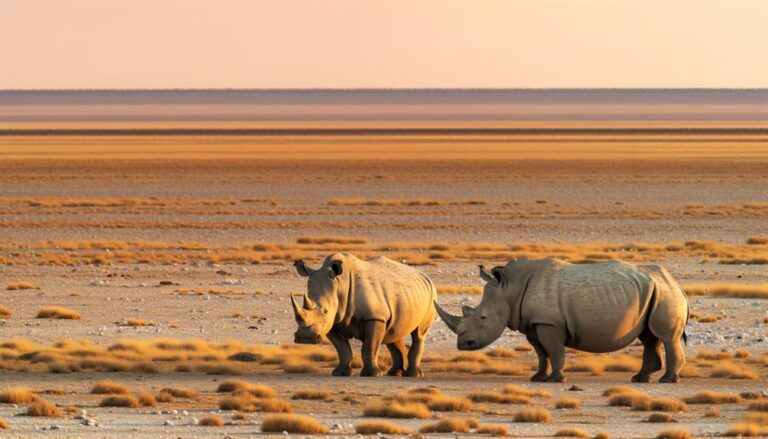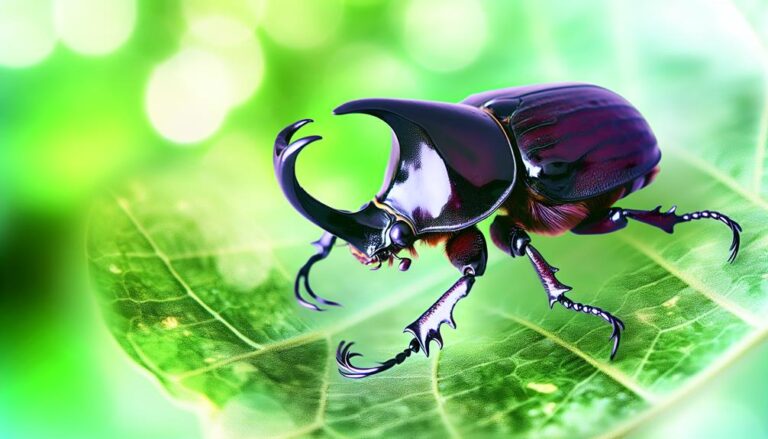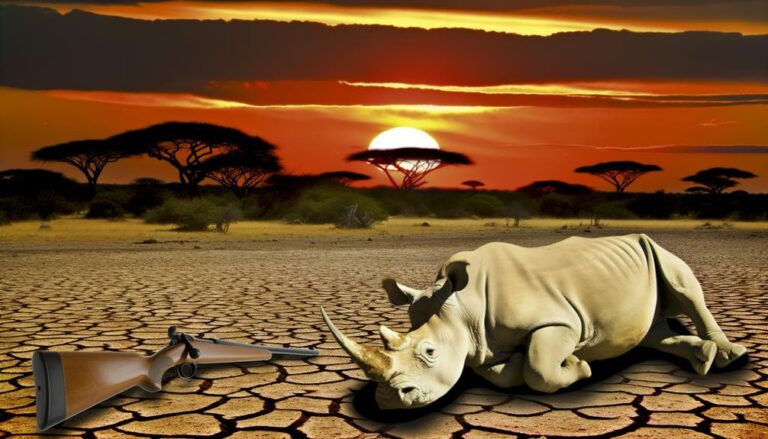What Is the Rarest Type of Rhino?
By coincidence, you're looking at a rhinoceros in the zoo just as the guide mentions the Javan Rhino, one of the rarest large mammals on Earth. You're intrigued, aren't you? Can you imagine less than 100 of these majestic creatures roaming the wild?
Now, you're probably wondering what's led to this critical situation and what's being done to help. It's more than just a story of a dwindling species; it's a tale of survival against the odds.
Understanding Rhino Rarity
To comprehend the rarity of rhinos, let's delve into the plight of the Javan rhino, the rarest of them all, with fewer than 100 individuals surviving in the wild, primarily in Java, Indonesia. Representing the epitome of rarity among large mammals, the Javan rhino is critically endangered, its population decline a stark testament to the severity of its plight.
Habitat loss, one of the most pervasive threats to wildlife, has significantly affected the Javan rhino. As human activities encroach on their natural habitats, these rarities find their living spaces shrinking, pushing them closer to the brink of extinction. Poaching, while not as rampant for the Javan rhino as for its African counterparts, has also played a role in the population decline.
Conservation efforts are a critical lifeline for the Javan rhino. With the population precariously low, every effort to protect and boost the population becomes indispensable. Through habitat protection, anti-poaching measures, and breeding programs, Indonesia is striving to save the Javan rhino from extinction. The rarity of the Javan rhino underscores the importance of understanding and addressing the challenges facing these iconic creatures. Only through dedicated conservation can we hope to safeguard these treasured large mammals for future generations.
Threats to Rhino Survival
Despite the dedicated conservation efforts, rhinos still face serious threats to their survival, with poaching for rhino horns and habitat loss ranking at the top. The northern white rhino, one of the rarest rhinos, is particularly vulnerable. Poaching, predominantly driven by the illegal trafficking of rhino horns, poses a significant risk. Rhino horns, erroneously believed to possess medicinal properties, are highly sought in certain markets.
Habitat loss, another grave threat, is mainly due to human encroachment and environmental changes. Rhino populations, including the one-horned rhinos, are dwindling as their natural habitats shrink. They're losing their homes to agriculture, infrastructure development, and other human activities.
Moreover, legal frameworks aimed at controlling the trade of rhino products have their limitations. Often, they're inadequately enforced, allowing illegal trafficking to persist. Anti-poaching measures, while crucial, are often hampered by lack of resources and corruption.
In this grim scenario, it's vital to enhance our understanding of these threats and devise effective strategies to mitigate them. Public education efforts, stricter enforcement of laws, and strengthening anti-poaching measures are some steps that could help secure the future of these majestic creatures.
Conservation Efforts for Rhinos

Dedicated conservationists are tirelessly working to safeguard the world's rarest rhino, the Javan rhino, whose survival is under threat due to relentless poaching and habitat loss. With less than 100 individuals remaining in the wild, the Javan rhino is critically endangered, a testament to the urgent need for ongoing conservation efforts.
A primary focus of these efforts is habitat protection within Ujung Kulon National Park, the only known refuge for this species. Recognizing the dire threat of poaching, anti-poaching measures are strictly enforced within the park's boundaries. These aggressive actions reflect an understanding of the detrimental impact illegal hunting has on this already fragile population.
Equally important are efforts geared towards population restoration. This involves the careful monitoring of population dynamics to understand growth rates, mortality causes, and breeding success. The data gathered is vital in formulating strategies for population recovery.
The conservation of the Javan rhino is an arduous but crucial task. It's a battle against time, against poaching, and against habitat loss. Yet, it's a battle that must be won to ensure the survival of the world's rarest rhino. The fate of this critically endangered species lies in the balance of these concerted conservation efforts.
Conclusion
As you can see, the Javan Rhino is the rarest type. They're under threat from habitat loss and poaching, with fewer than 100 left today.
It's imperative that we support conservation efforts to ensure this unique species' survival. Every effort counts in this battle against extinction. Understanding their rarity and the threats they face is the first step towards protecting them.
Let's join hands in safeguarding these majestic creatures for future generations.







